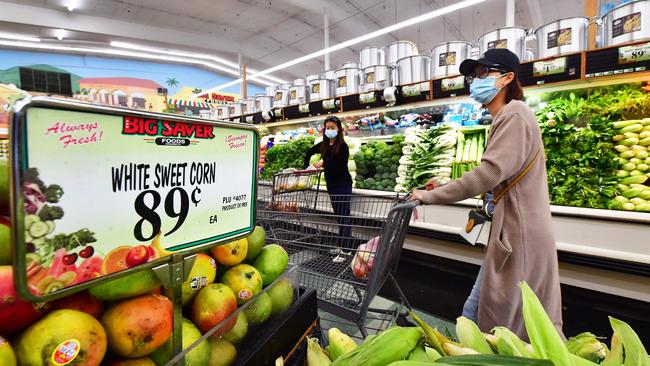US core inflation jumps to 6.6pc, headline CPI at 8.2pc
New US inflation figures leave the US Federal Reserve little option but to press on with a punishing series of interest rate increases that threaten to cause a global recession.

The Australian dollar faces further downward pressure after higher than expected US inflation left the Federal Reserve with little option but to press on with a punishing series of interest rate increases that threaten to cause a global recession.
Core US inflation, which strips out volatile food and energy prices, jumped to 6.6 per cent over the year to September, the highest level since 1982, up from 6.3 per cent in August, defying hopes inflation would begin to show signs of declining after months of hovering around 40-year highs.
Headline US inflation, above 8 per cent for seven months in a row, fell slightly to 8.2 per cent in September due mainly to a 5 per cent drop in petrol prices. But prices of core goods and services rose 0.6 per cent, ahead of an expected 0.4 per cent – and up from 0.3 per cent in July.
Cameron McCormack, a portfolio manager at VanEck, said the chances of a Fed pivot had “again been quashed and the chance of a Fed funds rate increase of 100 basis points can’t be ruled out”.
There would be continued volatility in the Australian dollar, Mr McCormack added, and that “could test the 60c level”.
“However as the Australian economy is in a better position than the US economy and is benefiting from strong commodity prices, low unemployment and robust consumer spending, the (Australian dollar) at current levels may be reaching an oversold position and offers good value against the US dollar.”
“We expect the Australian equity market to continue to outperform the US, lower but still elevated commodity prices and full employment bode well for Australia, which we expect will provide a soft landing, even with rising interest rates.”
On Friday morning, the Australian dollar was buying US63c.
The S&P/ASX200 closed up 1.71 per cent on Friday at 6756.2 points, following a rally in the US after investors decided that the inflation figure wasn’t as bad as it initially appeared.
Officials at the Fed had expressed concern at their meeting in September over the persistence of high inflation.

“The disappointingly broadbased and high inflation readings will keep the Fed in an aggressive tightening mode and on course for at least another 125 bps this year,” said Kathy Bostjancic, an economist at Oxford Economics. “We look for the Fed to raise rates another large 0.75 percentage points at the November policy meeting, followed by an additional 0.5 percentage points at the December meeting,” she added, moves that would leave the midpoint of the federal funds rate, the equivalent of the Reserve Bank’s cash rate, at 4.4 per cent.
The inflation figures cast a shadow over IMF and World Bank annual meetings in Washington, which Jim Chalmers was attending, and came hours ahead of the Treasurer’s scheduled meeting with Federal Reserve chairman Jerome Powell, where he was expected to discuss the impact of rising US rates for Australia. The Australian dollar has fallen almost 15 per cent against the US dollar since the Fed began its series of interest rates increases earlier this year.
“You don’t get inflation like this without a lot of things going wrong,” Michael Gapen, head of US economics at Bank of America told The Wall Street Journal.




To join the conversation, please log in. Don't have an account? Register
Join the conversation, you are commenting as Logout